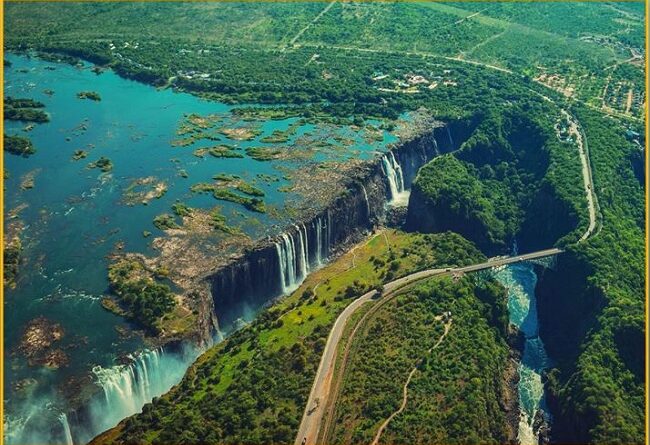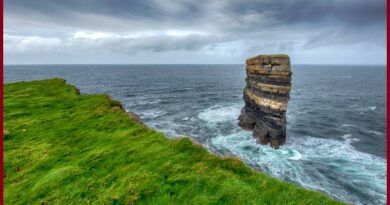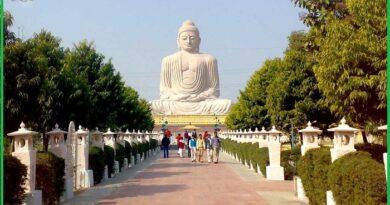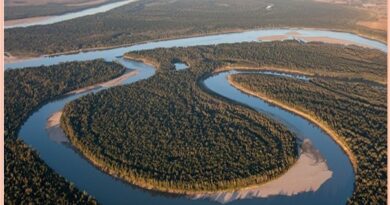The most spectacular waterfall in the world “The Victoria Waterfall” and the greatest attractions in Africa

In the Tsonga language, the name for Victoria Falls is Mosi-oa-Tunya: ‘the smoke that thunders’. The enormous volume of water colliding with rock after it makes a spectacular height of 108m. Victoria Falls showing a breathtaking sight of awe-inspiring beauty and grandeur. Victoria Falls is the largest waterfall in the world with a length of more than a kilometer and a height of more than a hundred meters.
The heart beating noise of Victoria Falls can be heard from a distance of 40 kilometers, while the spray and mist from the falling water are rising to a height of over 400 meters and can be seen from a distance of 50 kilometers. Perhaps that’s the reason local tribes used to say the waterfall Mosi-o-Tunya “The smoke that thunders”.

Geology of the Victoria Falls
The lush rainforests of southern Angola supply ample water to the Zambezi River. The waterfall is located on Atoka Basalt, which is part of the approximately 180 million-year-old Karoo Large Igneous Province. The basalt was laid down during a million-year period of gentle volcanic eruptions. The basalt in the fall area is up to 300m thick and forms a geological “island” in the surrounding field. Basalt formation stretches some 200km from Kazangulu on the Botswana border to the Matetsi River in the Batoka Gorge.
Victoria Falls is a UNESCO World Heritage Site. The falls were formed in a zone of crustal faults. On the crest of the fall, numerous islands divide the main flow into several branches during floods.

The waterfall was unpopular until 1905 when a railway to Bulawayo was constructed. Since then Victoria quickly gained popularity. In mid of the 20th century, the number of tourists started to decrease due to the guerrilla struggle in Zimbabwe. After Zimbabwe gained independence the Victoria Falls started to attract a new wave of tourism.
Also, Read- India’s hidden Coral reefs- Gulf of Mannar and Gulf of Kutch, Take a tour to incredible India
Victoria Falls National Park
Victoria Waterfalls comes under the National Park area. You can hear the roar of the falls at the entrance but the cataract is still hidden by the dense vegetation. A 200m walk along a cobblestone path quickly brings you to the incredible views. The best Viewpoint of Victoria waterfall is the western end along with the trend of the joint. You can see from here east along the length of the mist-filled chasm, this area is also known as the First Gorge.

The British explorer David Livingstone was the first European to see the falls in 1855. He named the Waterfall for Queen Victoria of the United Kingdom. The surrounding Victoria Falls National Park of Zimbabwe and Mosi-oa-Tunya National Park of Zambia abound with large and small games and offer recreational facilities.



